| Author |
Message |
|
Tony Brass
|
 Posted: Fri 17 Apr, 2009 1:17 pm Post subject: Why did falcata's go out of style? Posted: Fri 17 Apr, 2009 1:17 pm Post subject: Why did falcata's go out of style? |
 |
|
This style of sword, with the forward blade curve seems so powerful and practical, expecially in a world of chain maille and shields, that I cannot figure out why it was so popular with the celts, but went out of style.
Why did such an efficient weapon stop seeing use? or I should ask, did it?
I know the Kukri remains popular to this day in India, but why would it go out of use in Northern Europe?
For that matter, the leaf blade so popular in the bronze age, why did it fade in popularity?
|
|
  |
 |
|
Patrick Kelly
|
 Posted: Fri 17 Apr, 2009 1:39 pm Post subject: Posted: Fri 17 Apr, 2009 1:39 pm Post subject: |
 |
|
|
A simple answer would probably be the people of the time found that other designs were as efficient, or so close as to make the difference irrelevant. Therefore things like the falcata and the leafblade were replaced by designs that were just as deadly but easier to manufacture.
|
|
   |
 |
|
Werner Stiegler
|
 Posted: Fri 17 Apr, 2009 2:43 pm Post subject: Posted: Fri 17 Apr, 2009 2:43 pm Post subject: |
 |
|
|
I know that "celts" is a catch-all-term, but that the greek are supposed to be celts too now is a new one to me.
|
|
  |
 |
|
Patrick Kelly
|
 Posted: Fri 17 Apr, 2009 2:59 pm Post subject: Posted: Fri 17 Apr, 2009 2:59 pm Post subject: |
 |
|
| Werner Stiegler wrote: | | I know that "celts" is a catch-all-term, but that the greek are supposed to be celts too now is a new one to me. |
Falcata is the term used for this type of weapon when used by Iberian(Spain) "celts". Kopis is the correct term for describing it when used by the greek culture.
|
|
   |
 |
Bartek Strojek

|
 Posted: Fri 17 Apr, 2009 4:05 pm Post subject: Posted: Fri 17 Apr, 2009 4:05 pm Post subject: |
 |
|
I guess that each times have it own inventions. Curved blades shaped on the concave have it's own properties, very different from straight sword with broad fuller.
I guess that we haven't seen something like falcata in medieval for the same reason we haven't seen two handed swords or long protective crossguards in roman times.
Someone just haven't invented/liked it/thought that's a good idea.
|
|
  |
 |
Luka Borscak

|
 Posted: Fri 17 Apr, 2009 4:09 pm Post subject: Posted: Fri 17 Apr, 2009 4:09 pm Post subject: |
 |
|
|
Maybe it is a question of reach. Medieval swords are generally longer than antic swords. And a long falcata would be really heavy weapon.
|
|
  |
 |
|
David Sutton
|
 Posted: Fri 17 Apr, 2009 4:19 pm Post subject: Posted: Fri 17 Apr, 2009 4:19 pm Post subject: |
 |
|
A possible reason may be that the main areas where the Falcatta/Kopis was used i.e Spain, Greece and Italy all fell under Roman rule eventually. The general opinion is that the Romans used a system of combat based upon close-in sword fighting; valuing the thrust over the cut. A curved cutting sword like the Falcatta would seem unsuited for this style of combat. As they had no use for it, the Falcatta fell out of use in favour of straight swords.
'Reserve your right to think, for even to think wrongly is better than not to think at all'
'To teach superstitions as truth is a most terrible thing'
Hypatia of Alexandria, c400AD
|
|
  |
 |
|
Tony Brass
|
 Posted: Fri 17 Apr, 2009 9:29 pm Post subject: Posted: Fri 17 Apr, 2009 9:29 pm Post subject: |
 |
|
David, that does actually make the most sense. Falcatas give up thrusting potential. I guess my thought was that 24-30 inch axes were so common, and a falcata seems to be a better weapon in that length, and serve a similar function, in a better-balanced package. (but it would also be much harder to make, and more expensive).
Thanks for all of your thoughts on this to everyone.
|
|
  |
 |
|
Tony Brass
|
 Posted: Fri 17 Apr, 2009 9:30 pm Post subject: Posted: Fri 17 Apr, 2009 9:30 pm Post subject: |
 |
|
|
Patrick, your answer was also very helpful, thanks.
|
|
  |
 |
Bill Tsafa

Location: Brooklyn, NY Joined: 20 May 2004
Posts: 599
|
 Posted: Fri 17 Apr, 2009 9:58 pm Post subject: Posted: Fri 17 Apr, 2009 9:58 pm Post subject: |
 |
|
| David Sutton wrote: | | A possible reason may be that the main areas where the Falcatta/Kopis was used i.e Spain, Greece and Italy all fell under Roman rule eventually. The general opinion is that the Romans used a system of combat based upon close-in sword fighting; valuing the thrust over the cut. A curved cutting sword like the Falcatta would seem unsuited for this style of combat. As they had no use for it, the Falcatta fell out of use in favour of straight swords. |
This is probably the most correct answer.
Interestingly the word "kopis" just means "cutter". The accent is neutral between first and second syllable. It is used today together with some other word in everyday Greek language. Nixo-kopis is a "nail-cutter" or more common to us "nail-clipper". I believe it would have been a general term in Ancient Greece too since many words have not changed.
"Mahera" on the other hand is a dedicated war-sword. The root word in Mahera is Mahi which means War. In this case it has sort of lost its meaning in everyday Greek Language because Maheri is a common table knife. It literally translates to little war but has no modern relation to war. It is unquestionable though that in Ancient Greece when they said Mahera, they meant a bladed weapon used in battle, while Kopis could have been something used to cut the weeds, timber or men. I am not sure where the term Xiphos comes from other then to say that in common usage it relates to a razor, Xiraphi. So Xiphos may have just meant a sharp blade in ancient times.
No athlete/youth can fight tenaciously who has never received any blows: he must see his blood flow and hear his teeth crack... then he will be ready for battle.
Roger of Hoveden, 1174-1201
www.poconoshooting.com
www.poconogym.com
|
|
    |
 |
M. Eversberg II

|
 Posted: Fri 17 Apr, 2009 11:12 pm Post subject: Posted: Fri 17 Apr, 2009 11:12 pm Post subject: |
 |
|
Greek seems to have changed little...quite fortunate!
M.
This space for rent or lease.
|
|
      |
 |
|
Geoff Wood
|
 Posted: Sat 18 Apr, 2009 12:59 am Post subject: Posted: Sat 18 Apr, 2009 12:59 am Post subject: |
 |
|
| David Sutton wrote: | | A possible reason may be that the main areas where the Falcatta/Kopis was used i.e Spain, Greece and Italy all fell under Roman rule eventually. The general opinion is that the Romans used a system of combat based upon close-in sword fighting; valuing the thrust over the cut. A curved cutting sword like the Falcatta would seem unsuited for this style of combat. As they had no use for it, the Falcata fell out of use in favour of straight swords. |
A very minor digression - I would agree that a 'curved cutting sword like the Falcata would seem unsuitable for this style (thrust)', but I'm not sure that it is as bad as it seems. Falcata (ae??) in the Madrid museum have a reasonable point and a back edge, and just from messing about with a kukrl (I know, very different from a falcata, much heavier etc. but of similar overall shape) I'd say that the forward curve means that when the handle is held in a comfortable, natural grip, the point is parallel with the forearm (think of the way a luger pistol naturally points) which makes it suitable for thrusting (particularly to about throat height).
regards
Geoff
|
|
  |
 |
|
Marcos Cantu
|
|
  |
 |
Bill Tsafa

Location: Brooklyn, NY Joined: 20 May 2004
Posts: 599
|
 Posted: Sat 18 Apr, 2009 5:58 pm Post subject: Posted: Sat 18 Apr, 2009 5:58 pm Post subject: |
 |
|
| M. Eversberg II wrote: | Greek seems to have changed little...quite fortunate!
M. |
I don't want to give the wrong impression. It has changed in a similar way to how early Middle English has changed to Modern English. You can make out a lot of the words, but with out proper training you can not fully understand everything.
No athlete/youth can fight tenaciously who has never received any blows: he must see his blood flow and hear his teeth crack... then he will be ready for battle.
Roger of Hoveden, 1174-1201
www.poconoshooting.com
www.poconogym.com
|
|
    |
 |
Bennison N

|
 Posted: Sun 19 Apr, 2009 3:33 am Post subject: Posted: Sun 19 Apr, 2009 3:33 am Post subject: |
 |
|
Hi.
I have a real soft spot for these recurved swords, and I'm always happy to see more interest in them.
It must be pointed out, though, that Iberian Falcata and Greek Kopis are not the same sword by different names... They are different swords altogether. If you were to compare hostorical examples side-by-side, you would see differences aplenty, especially in the hilt/handle area, and also in the overall blade shape, including cross-section.
The Macedonian Machaira, interestingly, resembles a Celtic Falcata more than it does a Greek Kopis. Again, a comparison will show this. I have always liked the design of the hilts of these beautiful weapons... Comfortable to hold, and made in that shape to stay in the hand when jarred by hitting a harder target. Ingenious...
Now, historically, the Kopis was used by both the Greeks AND the Persians. I don't know who had it first. At that time, I would say that the ability of this design to cut would have been far, far superior to anything else ever seen, which is why it was adopted by both sides. A Egyptian/Canaanite Khopesh, by this time obselete would also have had a similar ability in it's time, as well.
While speaking historically, I once thought that the Khopesh was ancestor to the Kopis (it was the similarity in the names, I think...), and the Kopis the ancestor to the Falcata. I have since been advised and have found that this is not so.
No-one has ever tried to disagree that the Machaira led to the Nepalese Khukri, though, as it was the standard sword of the Macedonian Cavalry, and as Alexander himself always fought riding Bucephalus, it would probably have been the type of sword that Alexander used himself. It was used to kill lions by a certain religious group, the name of which escapes me, but which I will eventually have to look up again, as it is annoying me. It's right on the tip of my tongue...
Romans loved Iberian Celtic swords. Each and every Legion adopted the Gladius Hispaniensis, right? And after adopting it, the only major modification that ever seemed to have been made to the original Iberian design was an eventual addition of length. I have also heard of the Falcata having been used by certain Roman troops, although other forum members will know a lot more about this than me.
The last thing I would like to add that everyone here seems to be grossly and oh-so-mistakenly under-estimating the thrusting ability of the European recurve designs! The shape actually pulls the blade further into the wound, and they have enough point and presence to easily penetrate the armour, and enemies, of the day...
It's my opinion that it was simply a case of more (and safer) techniques being possible with a double-edged sword in a close, shields-up, stabby-stab battle, and the improvements in ore and forging that led to the decline of recurved swords in Europe. That's all...
"Never give a sword to a man who can't dance" - Confucius
अजयखड्गधारी
|
|
  |
 |
|
Lafayette C Curtis
|
 Posted: Sun 19 Apr, 2009 8:52 am Post subject: Posted: Sun 19 Apr, 2009 8:52 am Post subject: |
 |
|
| Vassilis Tsafatinos wrote: | | M. Eversberg II wrote: | Greek seems to have changed little...quite fortunate!
M. |
I don't want to give the wrong impression. It has changed in a similar way to how early Middle English has changed to Modern English. You can make out a lot of the words, but with out proper training you can not fully understand everything. |
So true! I get a kick from comparing the way the medieval Greek in Byzantine texts differ from the ancient texts in Classical Greek.
Going back to the original topic, though, are we so sure that such swords were not used in the Middle Ages? There were no designs that closely resembled the falcata/kopis, true, but there were the various choppers illustrated in the Maciejowski Bible and all...
|
|
  |
 |
|
Gary Teuscher
|
 Posted: Sun 19 Apr, 2009 1:33 pm Post subject: Posted: Sun 19 Apr, 2009 1:33 pm Post subject: |
 |
|
|
I believe the yataghan(sp) was a longer version of the falcata, probably though stemming more from the kopis, and was used by Ottoman era turks.
|
|
  |
 |
Kirk Lee Spencer

|
 Posted: Sun 19 Apr, 2009 4:01 pm Post subject: Re: Why did falcata's go out of style? Posted: Sun 19 Apr, 2009 4:01 pm Post subject: Re: Why did falcata's go out of style? |
 |
|
| Tony Brass wrote: | This style of sword, with the forward blade curve seems so powerful and practical, expecially in a world of chain maille and shields, that I cannot figure out why it was so popular with the celts, but went out of style.
Why did such an efficient weapon stop seeing use? or I should ask, did it?...
For that matter, the leaf blade so popular in the bronze age, why did it fade in popularity? |
Hi Tony...
Very interesting question.
I believe you are insightful in connecting the question of the end of the popularity of the leaf blade and the kopis/falcata forms. We put alot of attention on the fact that the blade of the Kopis/Falcata is curved. However, if were to go back in time, the ancients might have commented on the fact that both the Kopis/Falcata and the leaf blade xiphos had curved edges. One was double edged and the other single.
As has already been mentioned, there probably was a major fashion component. It may have even had to do with changing associations of the two forms. For instance, the possibility that one (the Kopis/Falcata) began to be associated with lowly tools. I remember that in the 3rd century B.C. tomb of the reliefs at Banditaccia Necropolis, north of Rome the machete like kopis form is found on the collumns with other tools while the Xiphos are proudly displayed high over the spirit beds with the helms and shields of war.
In reference to functional morphology or efficiency against maile and shield, it must be kept in mind that most kopis/falcata were not heavy bladed, but rather light and thin. So in terms of blunt force injury and shield splitting the axe and other percussive weapons might be more efficient. Spear and Javelin with the inertia of a long heavy shaft better at penetrating maile. And that is even considering that maile was very common on the battle field. From what I have read it was quite expensive.
In terms of archeological finds, though certainly not popular (even exceedingly rare), both the leaf blade (Fulham/Mainze Gladius) and modified Kopis/Falcata forms (Odd Netherland Finds & Dacian Swords From tragen's Column) did extend into the Roman Iron Age, if not the Middle Ages. (I think that Oakeshotte made mention of the connection Kopis/Falcata forms and the hilts of the German War Knives.) And even with the single edged Viking Swords, if you look closely, many of them have some subtle curves going on along the edges.
The shorter Falx is a Kopis/Falcata form of sorts with the blade curve but without the recurve at the tip. This would put the thrusting tip at the end of the swing rather than pushing the blade forward. Like a giant can opener, and used as such on Roman Helms (causing the advent of the ridge helm).
I have attached the images I have of the odd Netherland/Danish/Baltic finds. Note that it is the grip that is reminiscent of the Kopis/Falcata, the blade is straight as per what happened to the Xiphos leaf form. So, in terms of function, it could have something to do with changing Cog and Cop (however because of the thinness of the blade I have often wondered if there really is much of a difference in Cog... though I suspect it might reduce vibration a little to have more mass at the Cop. It might reduce the amount of material needed, however since the leaf blade has a thinner waist it probably is insignificant too.
So maybe changing fashion sense is the answer... and we know there is no accounting for taste  
The celts did like their curves in just about everything. And the Roman and Germanic designs were much more straight and angular in comparison.
Take care
ks
 Attachment: 146.47 KB Attachment: 146.47 KB
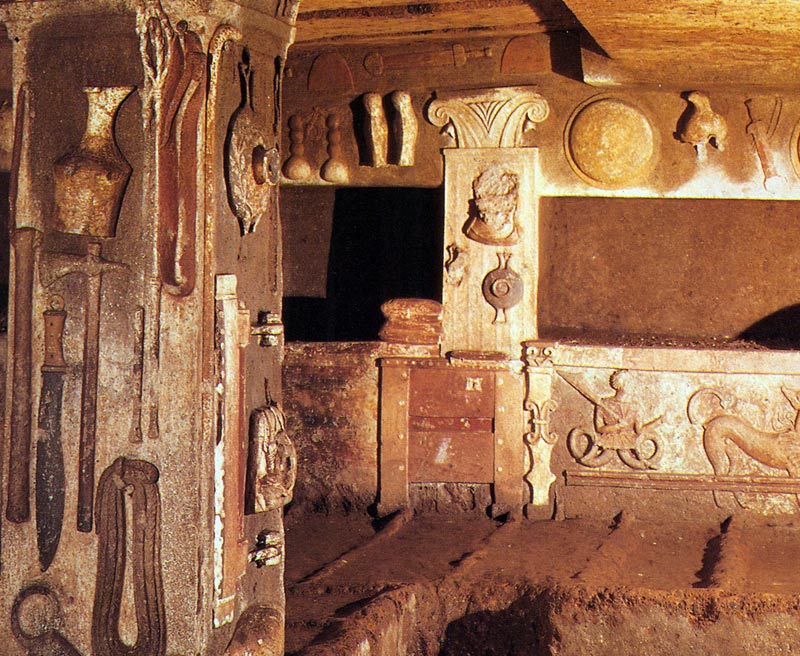
 Attachment: 147.7 KB Attachment: 147.7 KB
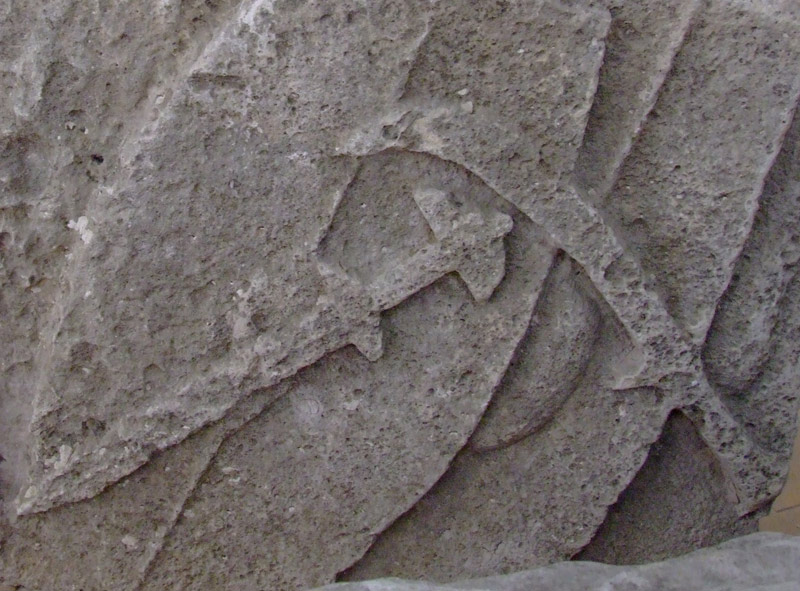
FalxFromPtropaeym Traiani Carving
 Attachment: 144.03 KB Attachment: 144.03 KB
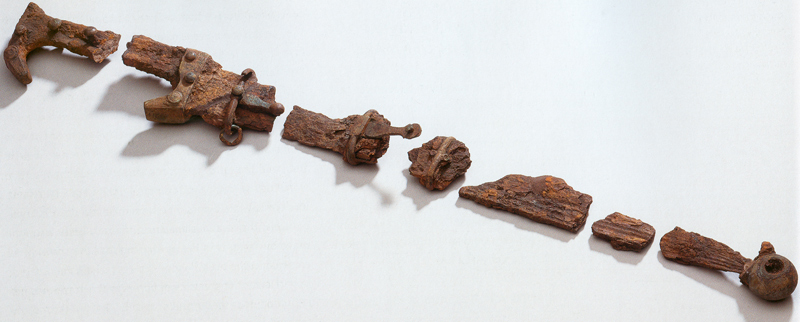
Single Edged Falcata-Like Sword From Aby Gammelgard Inhumation Grave. Arhus Co. Denmark Image from "Spoils of Victory: The North in the Shadow of the Roman Empire" eds. Lars Jorgensen, Birger Storgaard & Lone Gebauer Thomsen
 Attachment: 148.42 KB Attachment: 148.42 KB
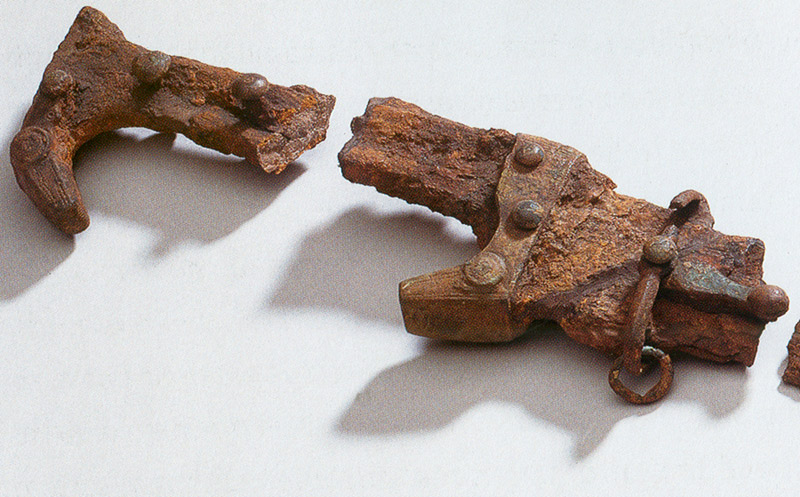
Hilt Detail Single Edged Falcata-Like Sword From Aby Gammelgard Inhumation Grave. Arhus Co. Denmark Image from "Spoils of Victory: The North in the Shadow of the Roman Empire" eds. Lars Jorgensen, Birger Storgaard & Lone Gebauer Thomsen
 Attachment: 34.47 KB Attachment: 34.47 KB
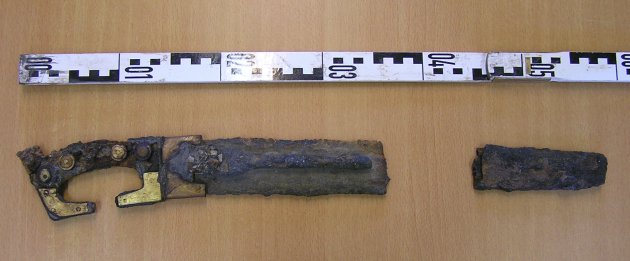
Roman Falcata 80AD. Castel Lumgarage Laurium Of Woerden Netherlands
 Attachment: 23 KB Attachment: 23 KB

Roman Falcata 80AD. Castel Lumgarage Laurium Of Woerden Netherlands
 Attachment: 142.35 KB Attachment: 142.35 KB
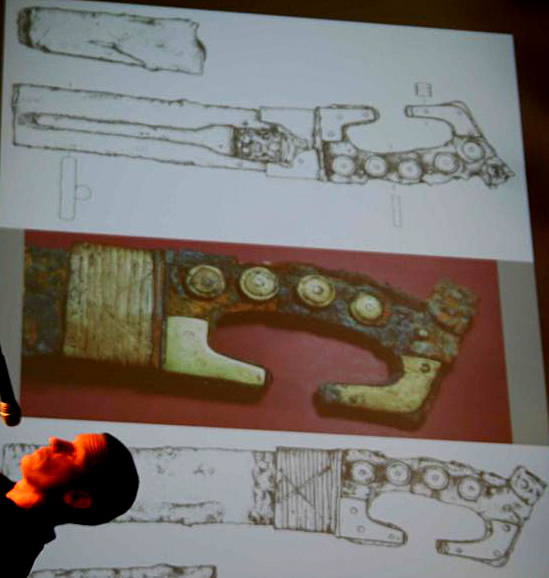
Roman Falcata 80AD. Castel Lumgarage Laurium Of Woerden Netherlands
Two swords
Lit in Edenís flame
One of iron and one of ink
To place within a bloody hand
One of God or one of man
Our souls to one of
Two eternities
|
|
  |
 |
Kirk Lee Spencer

|
 Posted: Sun 19 Apr, 2009 4:09 pm Post subject: Posted: Sun 19 Apr, 2009 4:09 pm Post subject: |
 |
|
I forgot to post the image from Trajan's collumn... And I have another similar straight bladed "Kopis/Falcata" like form from the Baltic.
ks
 Attachment: 67.39 KB Attachment: 67.39 KB
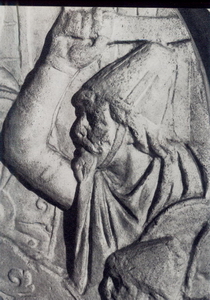
Dacian Falcata-Like Grip From Trajan's Column... Probably a Falx
 Attachment: 108.25 KB Attachment: 108.25 KB
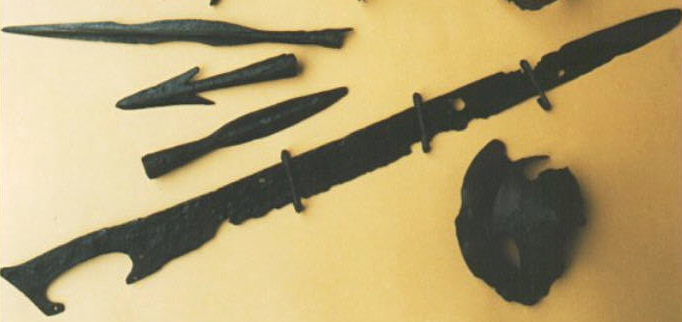
Polish Baltic Coast from the Oksywie Culture 2nd century B.C. to 1st century A.D.
Two swords
Lit in Edenís flame
One of iron and one of ink
To place within a bloody hand
One of God or one of man
Our souls to one of
Two eternities
|
|
  |
 |
|
Sam Gordon Campbell
Location: Australia. Joined: 16 Nov 2008
Posts: 678
|
 Posted: Sun 19 Apr, 2009 6:45 pm Post subject: Posted: Sun 19 Apr, 2009 6:45 pm Post subject: |
 |
|
Maybe a falx was a cheaper option?
Member of Australia's Stoccata School of Defence since 2008.
Host of Crash Course HEMA.
Founder of The Van Dieman's Land Stage Gladiators.
|
|
  |
 |
|
|
You cannot post new topics in this forum
You cannot reply to topics in this forum
You cannot edit your posts in this forum
You cannot delete your posts in this forum
You cannot vote in polls in this forum
You cannot attach files in this forum
You can download files in this forum
|
All contents © Copyright 2003-2024 myArmoury.com — All rights reserved
Discussion forums powered by phpBB © The phpBB Group
Switch to the Basic Low-bandwidth Version of the forum
|

